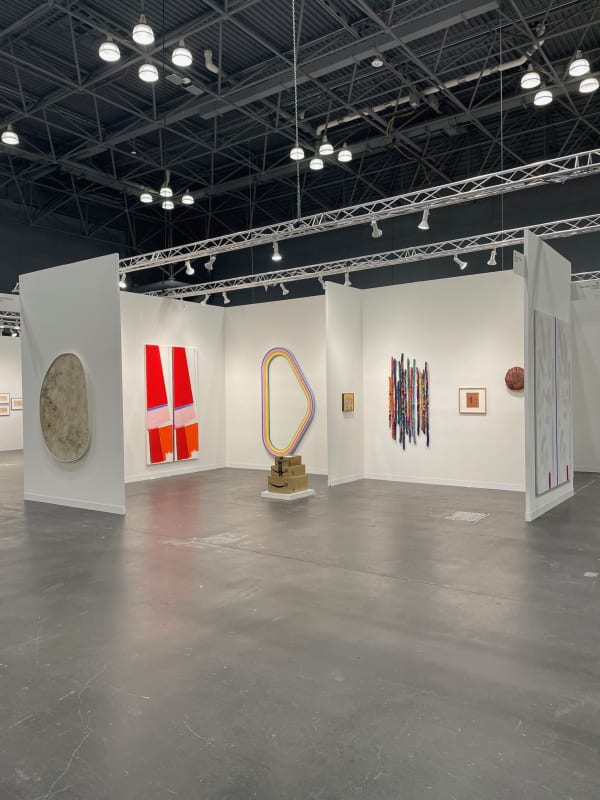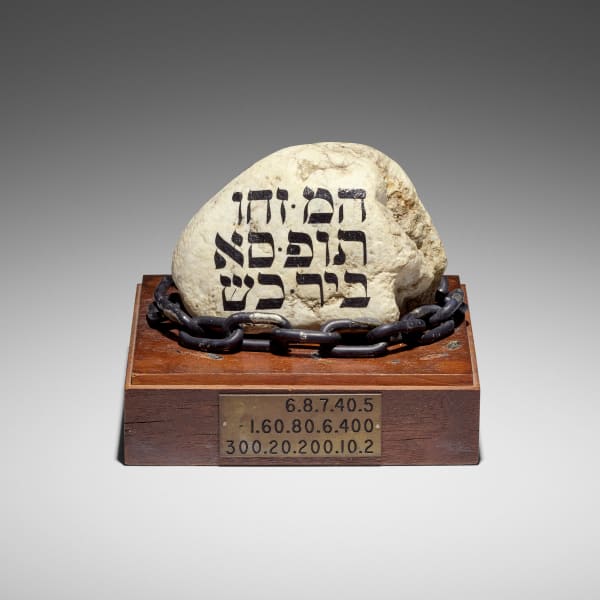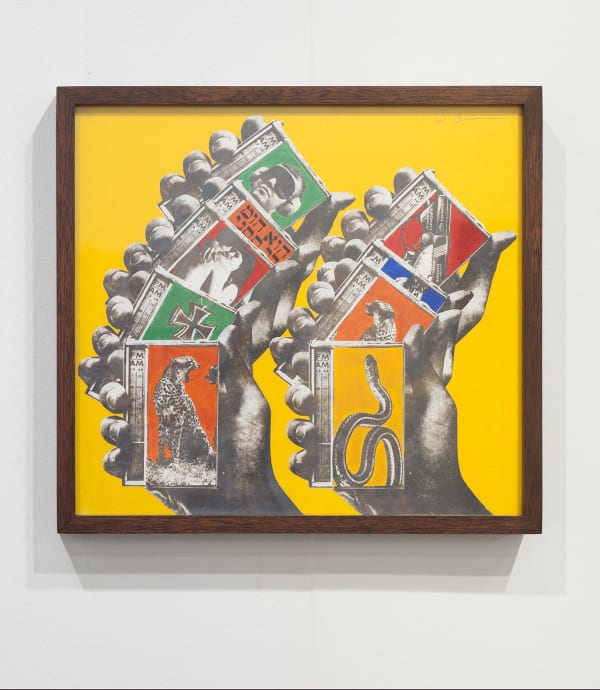Wallace Berman
Biography
Wallace Berman (born in 1926 in Staten Island, USA. Died in 1976 in Topanga, CA.)
Wallace Berman (1926-1976) was an iconic figure of the California Beat movement. His personality and multifaceted body of work deeply influenced several generations of artists. His practice resonates with jazz, Jewish mysticism, and poetry that accompanied and inspired his work. According to Dennis Hopper, "he affected and influenced everybody seriously involved in the arts in Los Angeles in the 1950's. If there was a guru, he was it – the high priest, the holyman, the rabbi." Walters Hopps recalled "his magical touch of wit" – a magical touch still operating on younger generations who discover Berman's work today. Berman had a strong relationship with his peers, for instance with Jay DeFeo who stood several times in front of the lens for him. Between 1953 and 1965, his small house on Crater Lane was the center of a community of artists; Charles Brittin described Berman’s home as a kind of artistic dissemination center. It was in Berman’s living room that the seeds for Semina Culture were sown. Berman's body of work includes collages, photography, graphic design, drawing, sculptures, and film.
Wallace Berman (né en 1926 à Staten Island, États-Unis ; décédé en 1976 à Topanga, Californie)
Wallace Berman était une icône de la Beat Generation, un mouvement littéraire et artistique californien. Sa personnalité et sa production aux facettes multiples eurent une influence profonde sur plusieurs générations d'artistes, qui se ressent encore aujourd'hui. Son travail entre en résonance avec d'autres disciplines qui l'accompagnèrent et l'influencèrent tout au long de sa carrière : le jazz, le mysticisme juif et la poésie. Comme l'affirme Dennis Hopper, « il marqua et influença toute personne sérieusement impliquée dans le monde des arts des années 1950 à Los Angeles. S'il y avait un gourou, c'était bien lui ». Berman avait une relation forte avec ses pairs, par exemple avec l'artiste Jay DeFeo qui posa plusieurs fois devant son objectif. Entre 1953 et 1965, sa résidence de Crater Lane devint le centre d'une communauté d'artistes ; ce fut dans son salon que la culture Semina vit le jour. Le travail de Berman comprend des collages, des photographies, des dessins, du design graphique, film et sculptures.
Works
Exhibitions
-

Wallace Berman
Art Basel 2019 13 - 16 Jun 2019Born in Staten Island, Wallace Berman moved to Los Angeles as a child. He enrolled at the Jepson Art Institute and at Chouinard Art Institute, but did not finish studies...Read more -

Visual Music
Wallace Berman curated by Sophie Dannenmüller 8 Sep - 11 Oct 2018galerie frank elbaz is pleased to present Wallace Berman – Visual Music , the artist’s third solo exhibition in Paris. The catalog essay and exhibition examine the connection between sound...Read more -

Lost in the Flood
Wallace Berman, Will Boone, Virginia Overton 22 Oct - 19 Dec 2015In 1964, Wallace Berman's wooden house on Crater Lane in Los Angeles was devastated by a mudslide that destroyed everything on its path. The house on Crater Lane was an...Read more
Events
-

Armory Show 2022
Davide Balula, Wallace Berman, Sheila Hicks, Michael Horsky, Ari Marcopoulos, Bernard Piffaretti, Mungo Thomson 8 - 11 Sep 2022Read more -

Art Basel 2022
Wallace Berman, Ja’Tovia Gary, Sheila Hicks, Julije Knifer, Kenjiro Okazaki, Bernard Piffaretti, Bojan Sarcevic, Mungo Thomson 14 - 19 Jun 2022Read more







